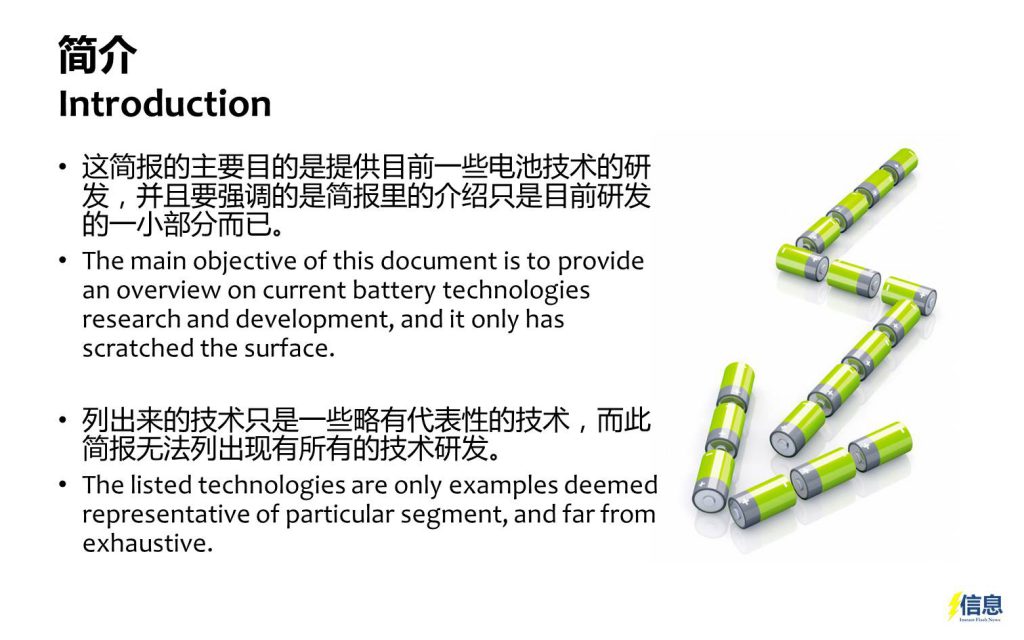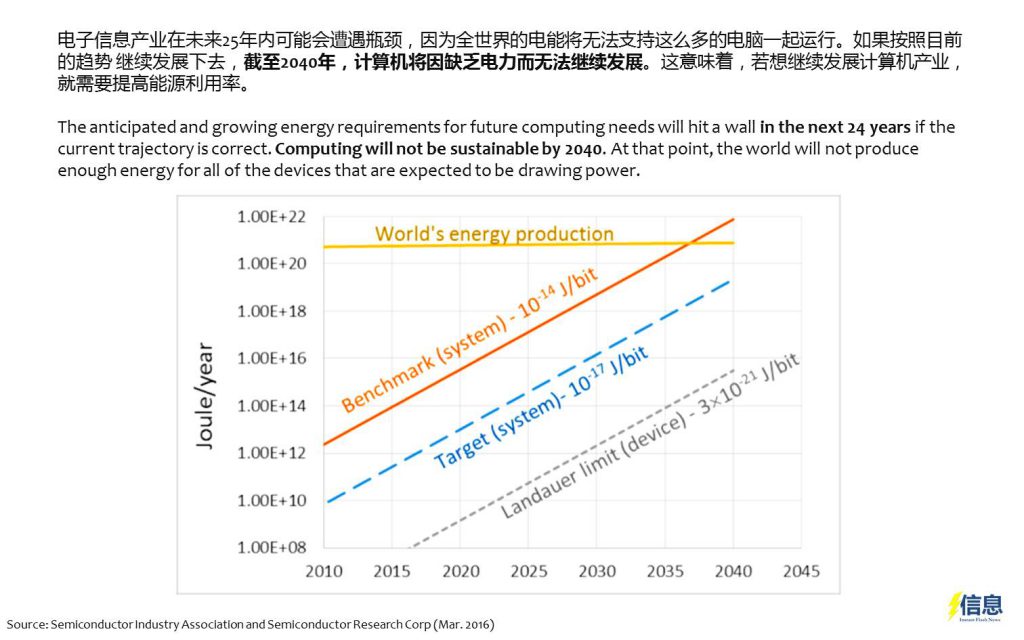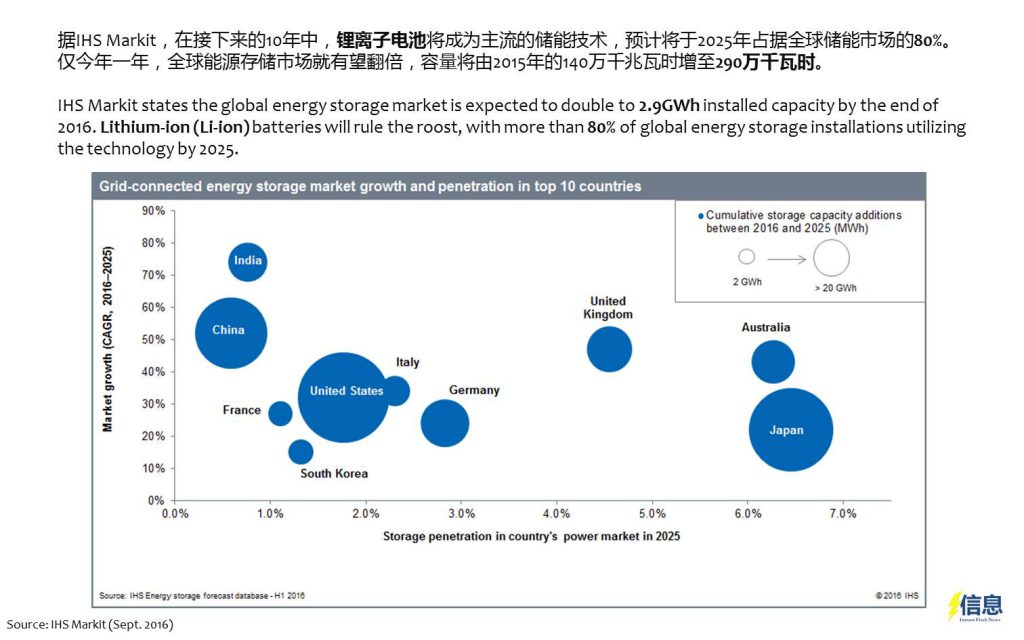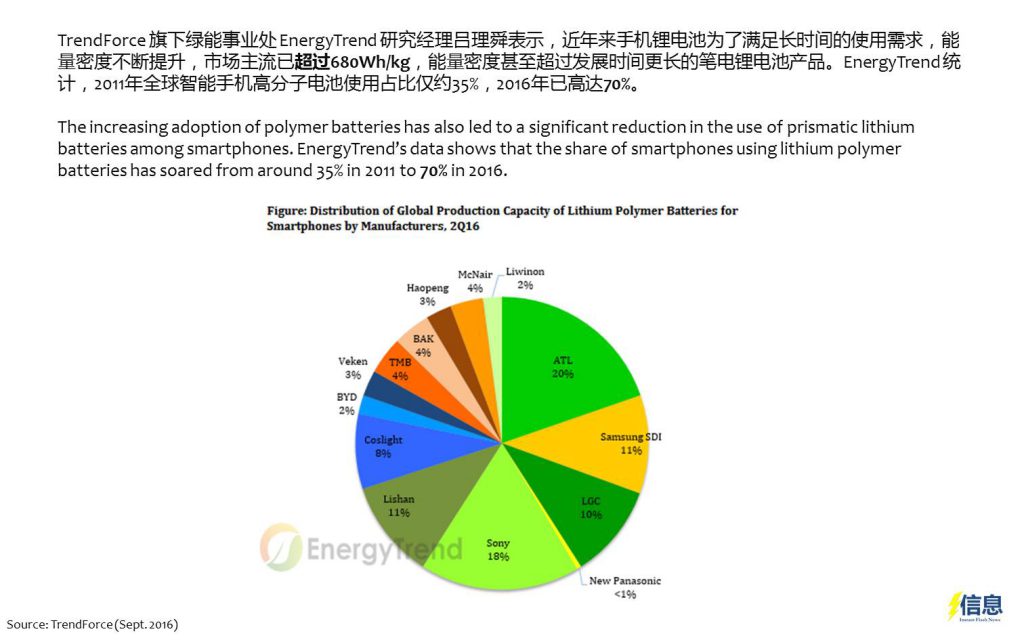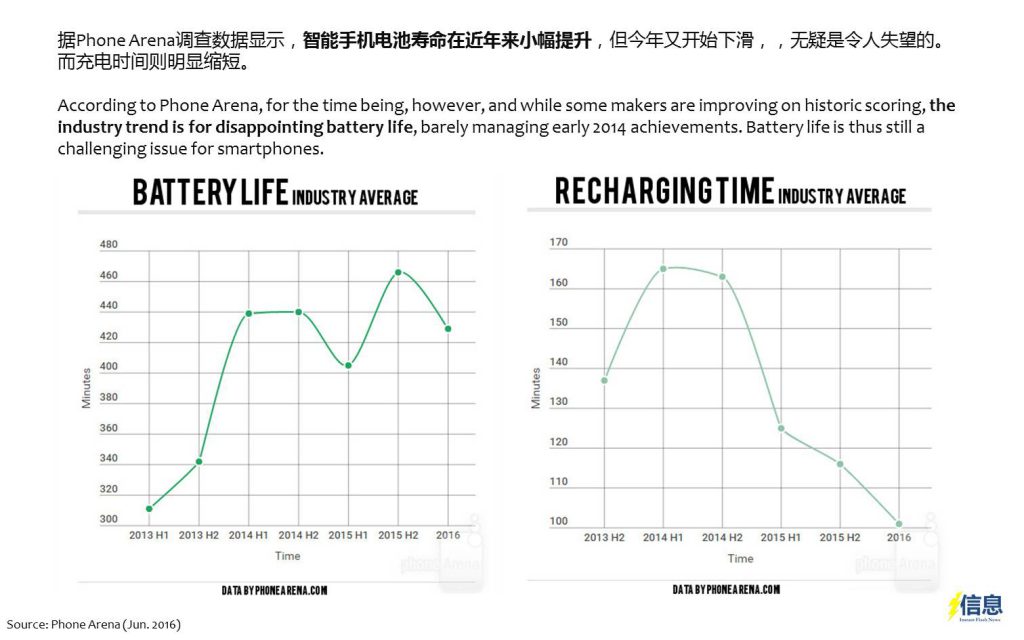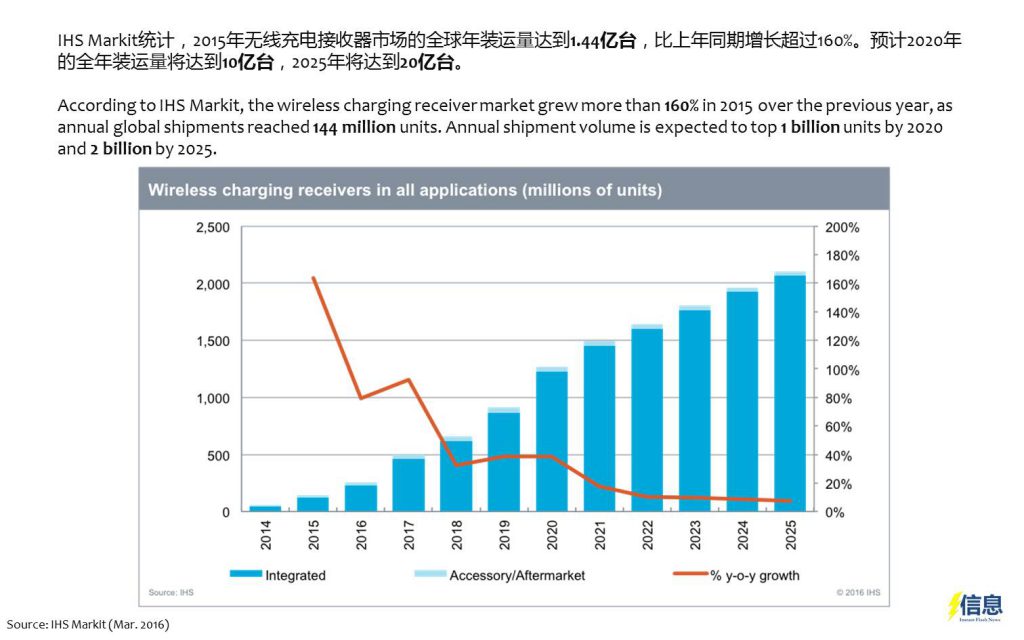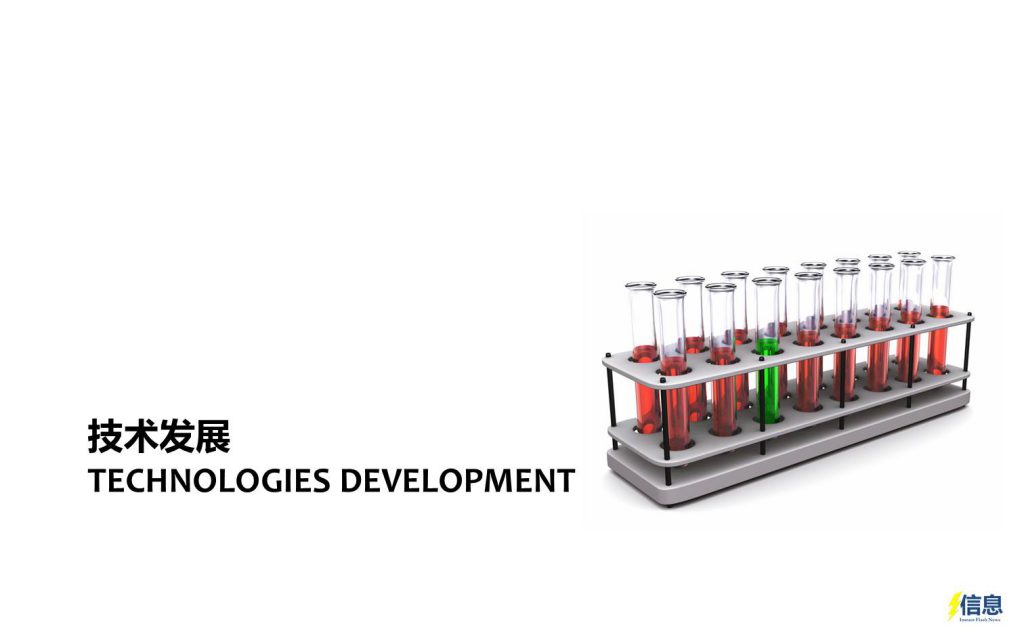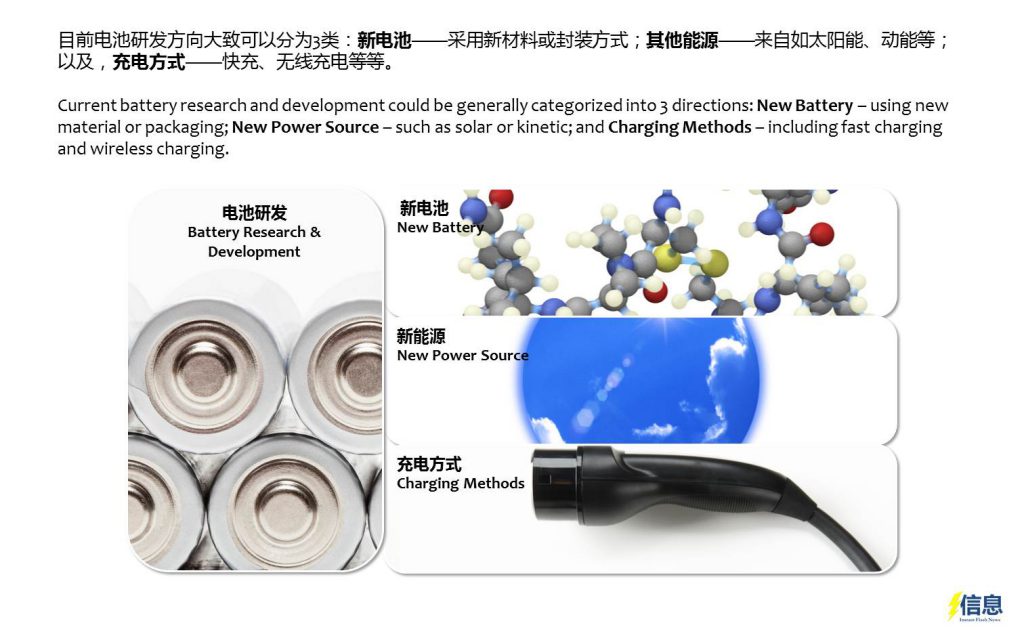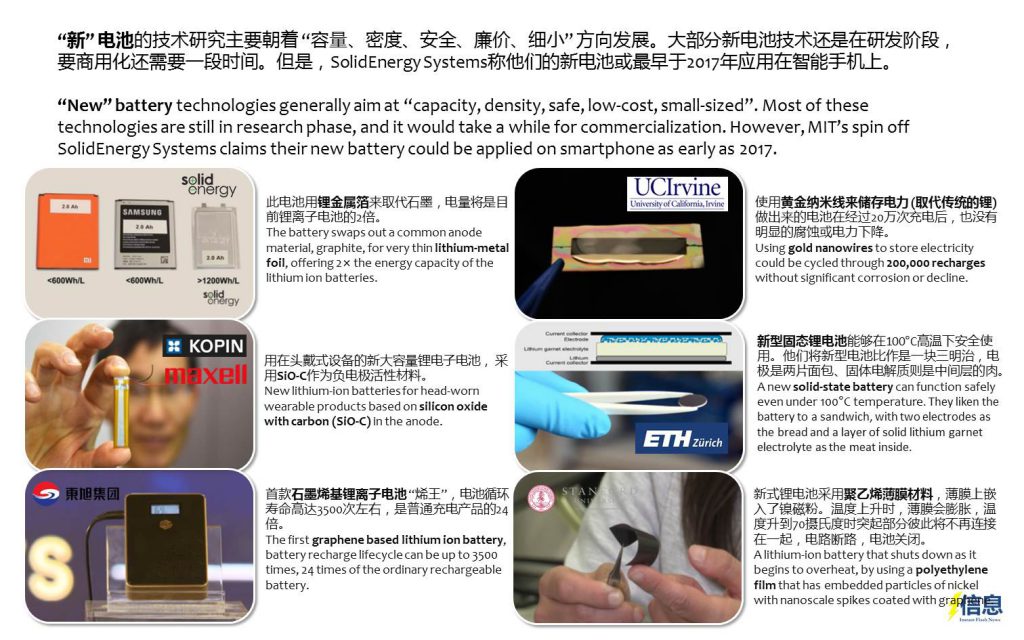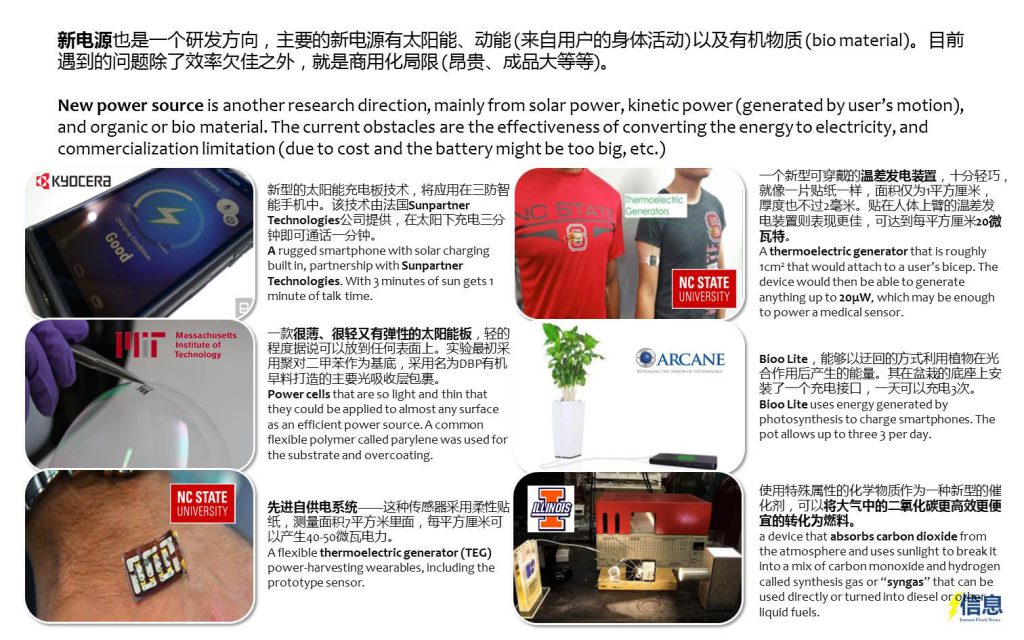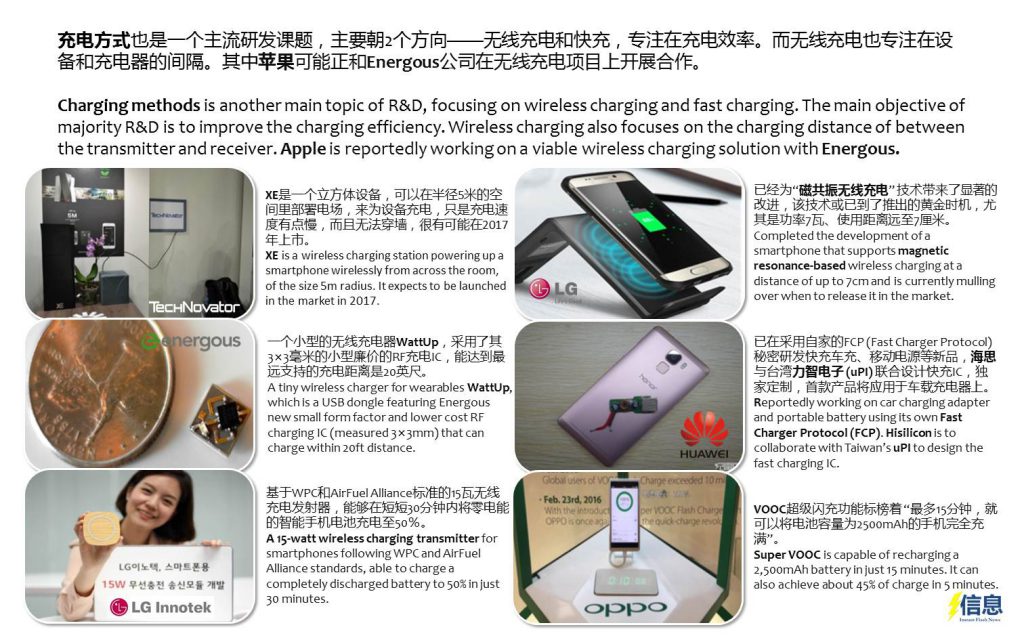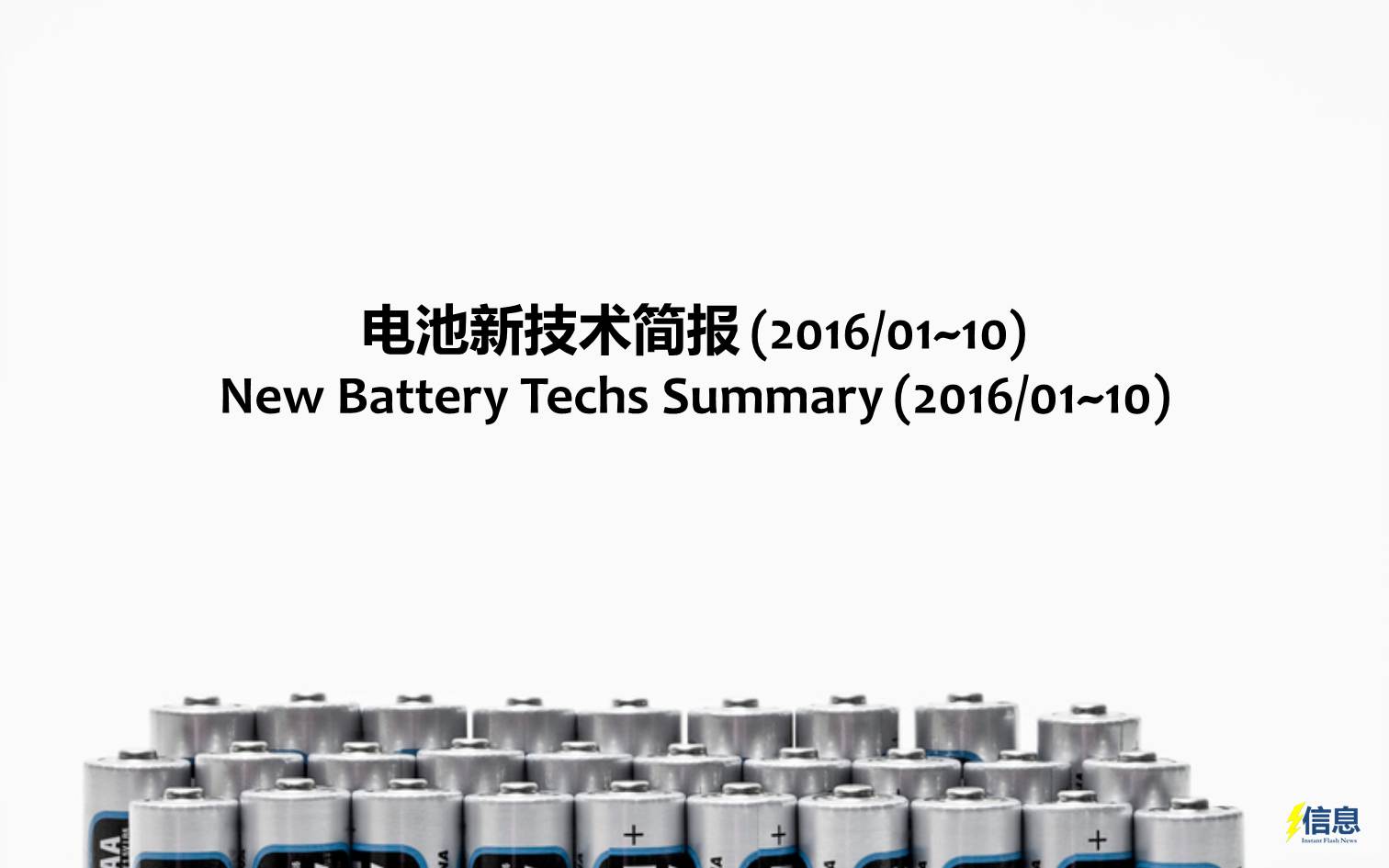
New Battery Techs Summary (2016/01~10)
The main objective of this document is to provide an overview on current battery technologies research and development, and it only has scratched the surface. The listed technologies are only examples deemed representative of particular segment, and far from exhaustive.
- The anticipated and growing energy requirements for future computing needs will hit a wall in the next 24 years if the current trajectory is correct. Computing will not be sustainable by 2040. At that point, the world will not produce enough energy for all of the devices that are expected to be drawing power.
- IHS Markit states the global energy storage market is expected to double to 2.9GWh installed capacity by the end of 2016. Lithium-ion (Li-ion) batteries will rule the roost, with more than 80% of global energy storage installations utilizing the technology by 2025.
- The increasing adoption of polymer batteries has also led to a significant reduction in the use of prismatic lithium batteries among smartphones. EnergyTrend’s data shows that the share of smartphones using lithium polymer batteries has soared from around 35% in 2011 to 70% in 2016.
- According to Phone Arena, for the time being, however, and while some makers are improving on historic scoring, the industry trend is for disappointing battery life, barely managing early 2014 achievements. Battery life is thus still a challenging issue for smartphones.
- According to IHS Markit, the wireless charging receiver market grew more than 160% in 2015 over the previous year, as annual global shipments reached 144 million units. Annual shipment volume is expected to top 1 billion units by 2020 and 2 billion by 2025.
- Current battery research and development could be generally categorized into 3 directions: New Battery – using new material or packaging; New Power Source – such as solar or kinetic; and Charging Methods – including fast charging and wireless charging.
- “New” battery technologies generally aim at “capacity, density, safe, low-cost, small-sized”. Most of these technologies are still in research phase, and it would take a while for commercialization. However, MIT’s spin off SolidEnergy Systems claims their new battery could be applied on smartphone as early as 2017.
- New power source is another research direction, mainly from solar power, kinetic power (generated by user’s motion), and organic or bio material. The current obstacles are the effectiveness of converting the energy to electricity, and commercialization limitation (due to cost and the battery might be too big, etc.)
- Charging methods is another main topic of R&D, focusing on wireless charging and fast charging. The main objective of majority R&D is to improve the charging efficiency. Wireless charging also focuses on the charging distance of between the transmitter and receiver. Apple is reportedly working on a viable wireless charging solution with Energous.

